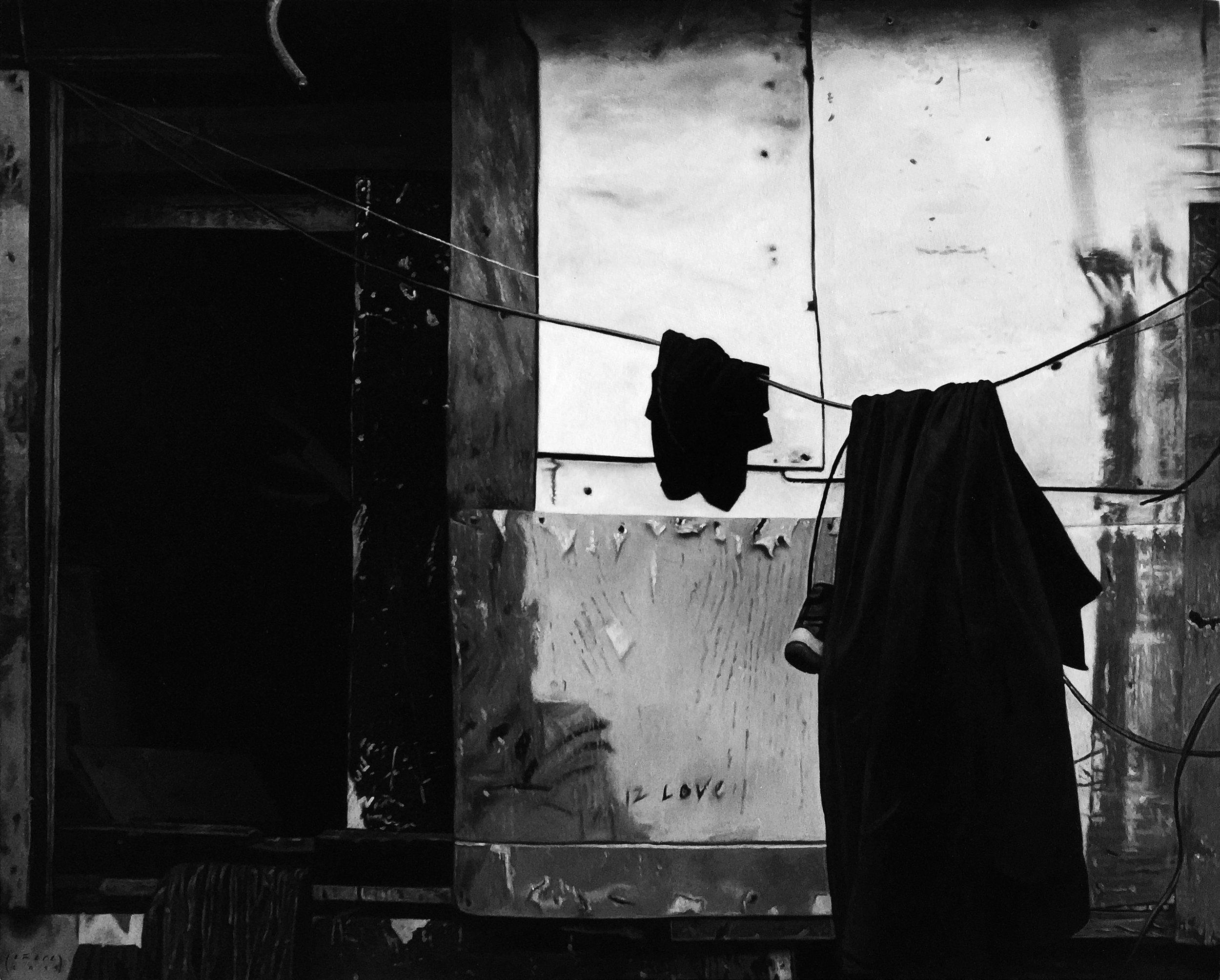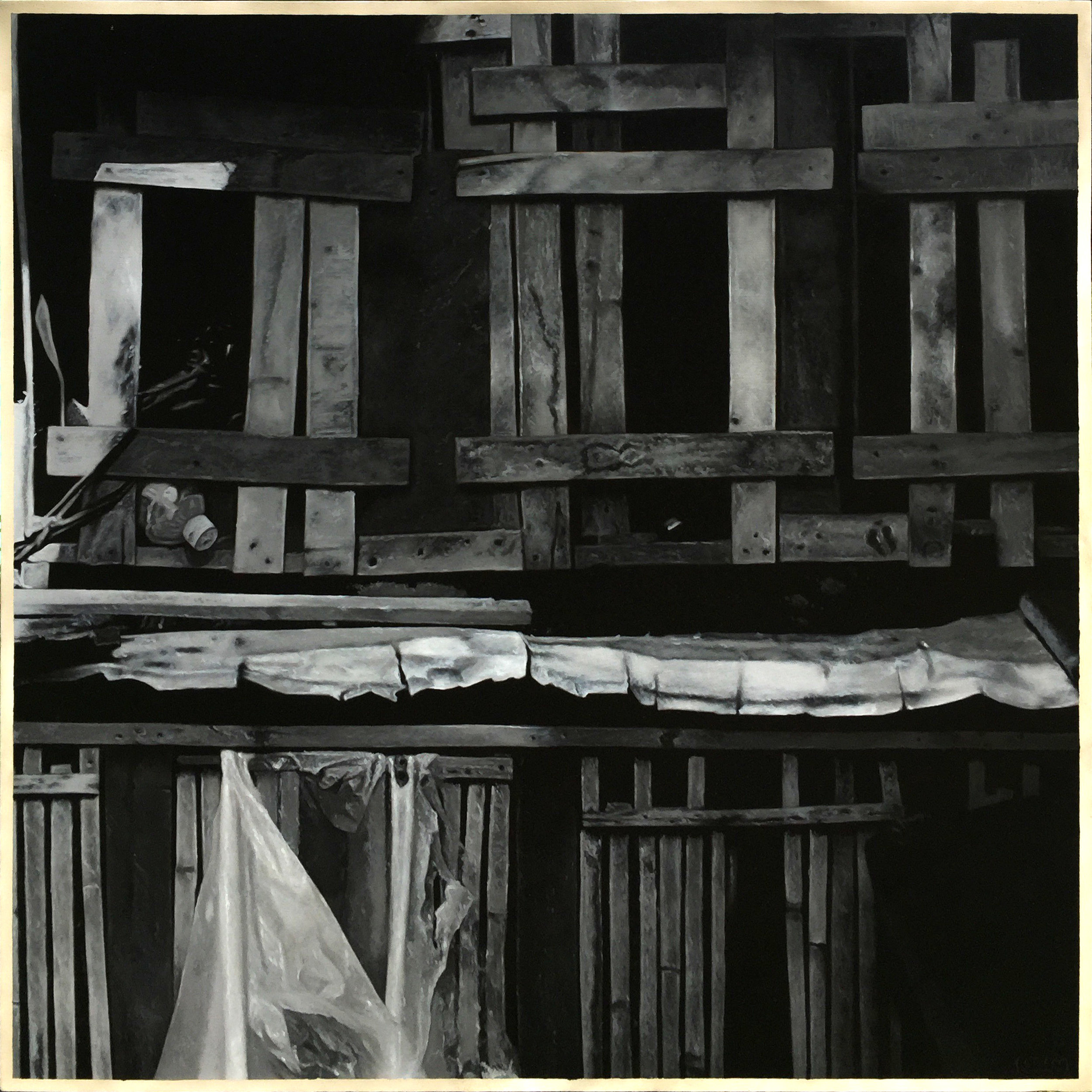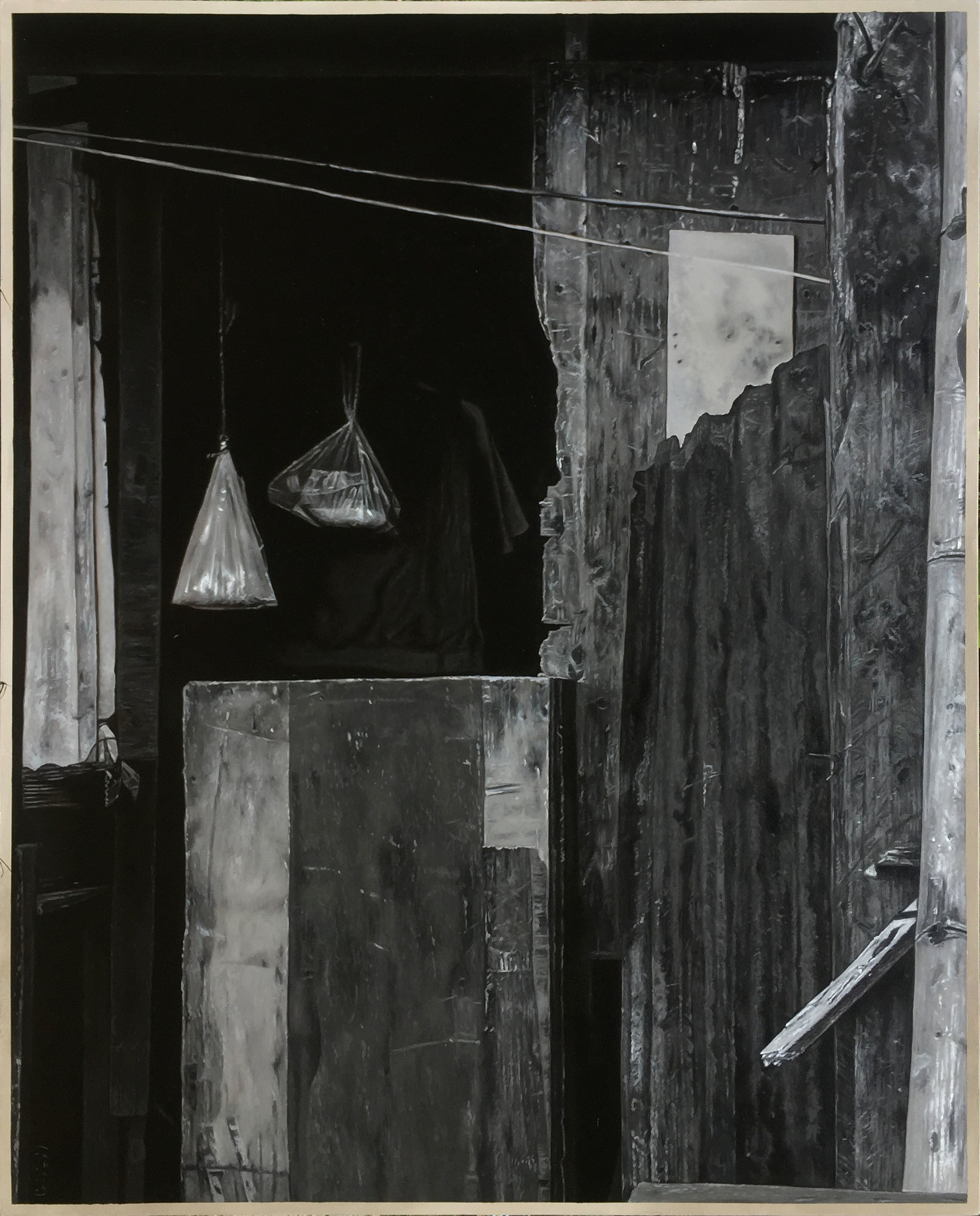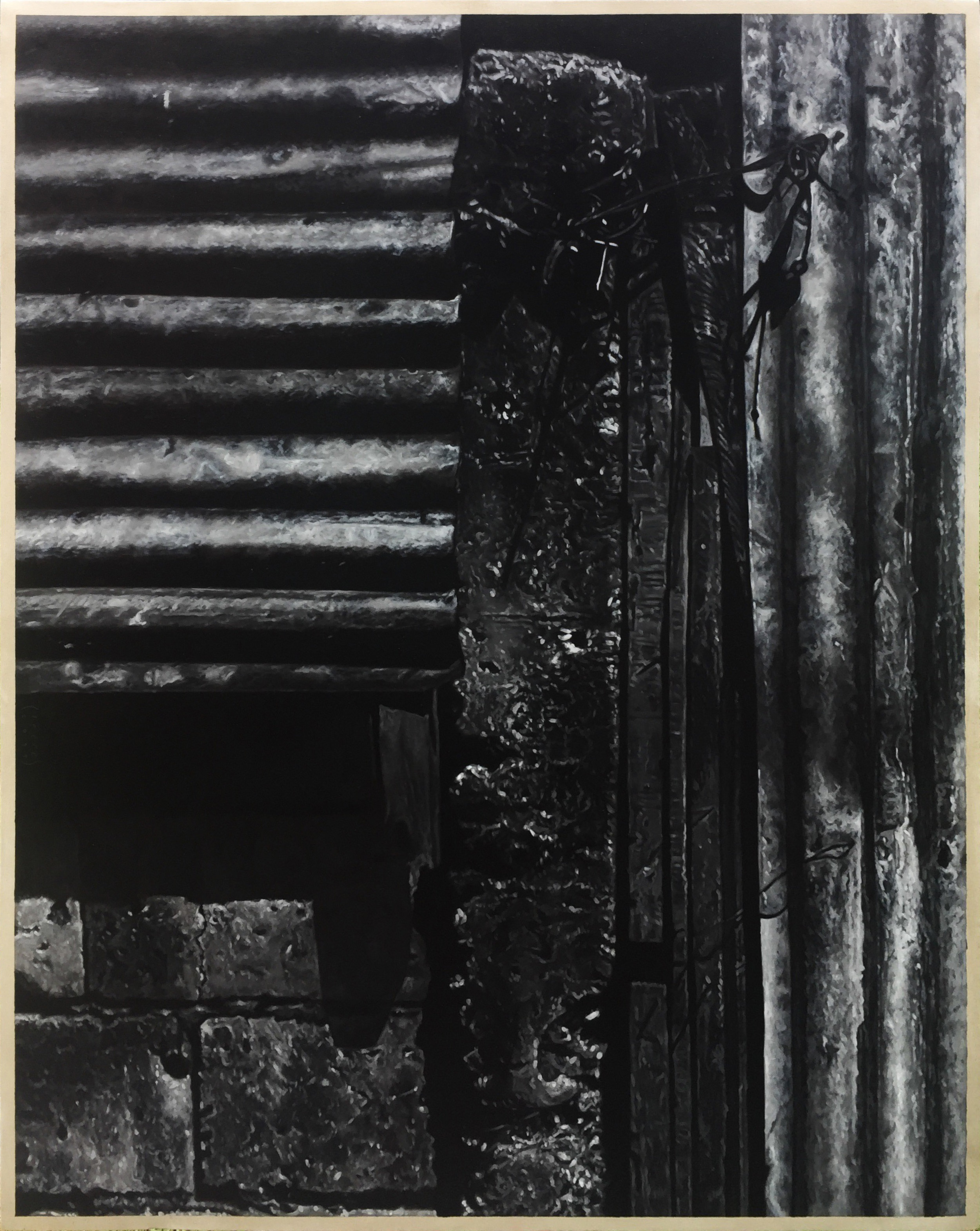Ciron Señeres: Unintentional Forming Objects (UFO)


The Filipino emerging artist Ciron Señeres paints Manila. He is faithful to the reality and presents metro Manila on his canvas with photorealistic style. Thoulgh his paintings are based on reality, his rigorous composition and precise control of monochrome color make the paintings harmony with appropriate contrast. Wires, iron roofs overlying the slums, clothes hanging outside windows, stacked garbage in the corner, Señeres honestly records phenomenon of modern urban that we neglect and regard as messy and dirty. However, those noisy contents seem calm and even aesthetic in Señeres’s paintings. The extreme gap between the rich and the poor in cyberpunk sci-fi has become true in Manila and many other Asian cities where hard and soft facilities are overloaded under rapid urbanization and dramatic population growth. Señeres’s paintings make viewers stare at such the current situation as if they are in the daily life of others.
The scenes within Señeres’s painting can be seen as taking a glimpse into daily life, or a perspective of residents, standing besides the wall of the slums staring at the surrounding soundlessly. However, when Señeres somewhat decides to look from an anthropological perspective, his paintings implicate the imaginary of excess reproduction with large amount of repetitive and the images of waste which extends beyond the painting. Repeated coffee cups, repeated Styrofoam lunch box, repeated black garbage bags, repeated tin roofs which seem endless, repeated wooden wall panels, repetitive plastic water pipes, repeated and meaningless graffiti and commercial logos; the united output from the assembly line, the repetitive goods which mark with price on the shelf, all of these end up being left at the corner of the slums of Manila, and turn out to be the property of the disadvantages. Excess and scarcity, wealth and death, appear simultaneously in the endless garbage dump.
Imagine that these scenes are presented by photographic techniques which are also products from the age of mechanical reproduction, and the photography created under this technique which focuses on the urban slums will then be a kind of social documentary, revealing all the dirty and ugly aspects of the reality. Through mimicking the reality through oil on canvas, the artist removes all the implication that points to the possibility of repetition behind the photography. The depiction of the slum suddenly sublimes with aura, and the faraway moment that seems close. Interestingly, the unique "Aura" is exactly the excess output under the mechanical reproductive assembly line. Therefore, his paintings are not so much a simulation of ugliness as a kind of aesthetic compliment with a slight irony of ugliness and chaos.
While examining the development of art from the context of art history, we can find out that before the rise of Modernism, the narration of visual art is inseparable from beauty, and the definition of beauty is limited without any sake. The aesthetic, at the spot, contains a certain degree of sublimity, symmetry, lines, and the metaphors of reproductive advantages. Although contemporary art has long abandoned aesthetics as the only indicator of art, the so-called diverse art still gets a certain political and single mode under the production and consumption culture. As an emerging artist, Señeres follows the mimic and realistic style under mechanical reproduction that somehow contradict to the mainstream narration nowadays which are not the complete bright and cold American style within the artwork of Ralph Goings or John Baeder, but chaos, ruins and plastic trash.
And the beginning of contemporary art, Andy Warhol turns soap boxes and campbell ‘s soup cans that are no different from the commodity into the main subject of his art practice. When such strong functionality and massive production, and consumption symbol inevitably becomes garbage that is useless and without aesthetics, Señeres then arrange them as the main characters on his canvas. The garbage within Señeres’s paintings are usually swayed with iron and wood strips which seems lonely and peaceful. The implications full of story and fable that reveal the different before and after human utility process sustain the negative emotion that is close to people, reality and society. Therefore, his paintings bring daily beauty towards demise. Anti-sacred and anti-sublimity unmask the dark side of the human civilization constructed by human consumption.
At this point, the essence of art seems not to be completely neutral. In the glamorous exhibition venue that carries out the narration of capital society, Señeres's paintings seem to open up a window to other worlds, from content and expression techniques to considering them as art, he demonstrates the reality through the contradiction that everyone tries to avoid. His artworks remind people that the meaning of art cannot be separated from the market and politics. The value of art itself involves in human existence. Therefore, when we look at Señeres's paintings, black and white tones and unpretentious compositions seem to tell a story in a plain and neutral way, but we must be aware of the life appearances and the local care that embedded within his paintings.



